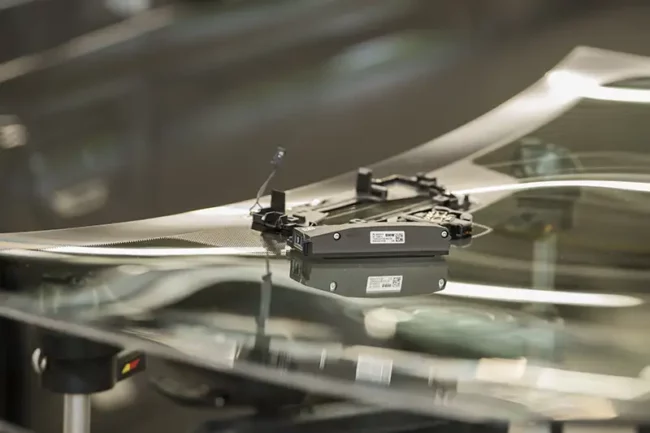Rain Sensors for New Houston Windshields

Rain sensors improve safety and convenience for you when driving by automatically activating windshield wipers when precipitation is detected. This feature is a huge bonus in Houston, where we can experience sudden and often intense rainstorms. One minute you might be driving under a light sprinkle, and the next, you may be barely able to see the road in front of you due to an absolute downpour. In such rapidly changing conditions, manually adjusting wiper speed can be distracting and take your focus away from the road.
Rain sensors react instantly to the first drops of rain, and as the intensity of the rain increases, the sensors automatically adjust the wiper speed to match. This responsiveness is crucial during our unpredictable Houston storms where visibility can plummet in seconds. That’s why you want to make sure your rain sensor is working perfectly at any given point in time, but especially after you get a new windshield replacement for your vehicle.
For thorough, reliable work on your windshield from start to finish, trust the team at Affordable Auto Glass. We are the #1 auto glass shop in Houston.
How Do Rain Sensors Work?
The most common type of rain sensor works by emitting an infrared light beam into the windshield at an angle. If the glass is dry, the light reflects back into the sensor. However, when raindrops accumulate on the outer surface, they cause the light to scatter and refract, reducing the amount of light returning to the sensor. When decreased light is detected, it sends a signal to the vehicle’s computer system to activate the windshield wipers.
The system can also adjust the wiper speed and frequency based on the intensity of the rainfall. As the rainfall intensifies, more water droplets on the windshield cause a greater degree of light refraction, and less light returns to the sensor. This reduction in reflected light is interpreted by the vehicle’s computer as heavier rain, prompting the wipers to move even more quickly. Some vehicle’s systems might incorporate additional sensors, such as humidity sensors, to further refine your automatic wiper control.
Where is my Rain Sensor Located?
Your sensor is typically located near the rearview mirror mount on the interior side of the windshield. It’s usually identified by a small, clear gel pad, which is where the sensor makes contact with the glass.
Some newer vehicles are beginning to utilize the forward-facing cameras used for other ADAS features to passively detect rain. These systems analyze the visual data captured by the camera to identify the presence and intensity of precipitation. However, dedicated optical rain sensors remain the prevalent technology due to their reliability and accuracy in detecting moisture on the windshield regardless of ambient light conditions.
Calibrating Your Rain Sensor After Windshield Replacement
When replacing a windshield with a rain sensor, there are two factors that are important: first, making sure that the new glass is compatible, and second, that the sensor is properly reinstalled and calibrated.
The new windshield must be specifically designed to accommodate a rain sensor. This means it will have the integrated mounting point and designated area for the sensor to make proper contact with the glass. This contact area is usually a smooth, clear section, sometimes with a pre-applied gel pad or a specific surface finish. The sensor needs to be in direct and uniform contact with the glass to effectively transmit and receive the infrared light signals. If you are getting an aftermarket windshield specifically designed for your vehicle make, model, and year, it should be ready to go for your sensor setup.
Even with the correct replacement windshield, simply reinstalling the rain sensor is not enough. The sensor’s performance relies on its precise alignment and calibration with the new glass. During the windshield replacement, the original sensor is detached. When it’s reattached to the new windshield, its position might be slightly different, or the optical path through the new glass might vary subtly from the original. So, a proper calibration process is essential. This involves using specialized diagnostic tools and software that communicate with your vehicle’s computer to make sure that it is accurately interpreting the signals it receives from the sensor. Skipping this calibration can result in the wipers activating erratically, not activating when needed, or responding inappropriately to the intensity of the rain.
Precise Windshield Match for Your Vehicle
Finding the precise windshield match for your vehicle is our specialty at Affordable Auto Glass. We understand that every car, truck, and SUV has unique glass specifications, and our extensive inventory caters to a wide range of makes and models. Trust us to provide a replacement windshield that meets or exceeds OEM standards for a perfect fit every time. Get a free windshield replacement quote today.
